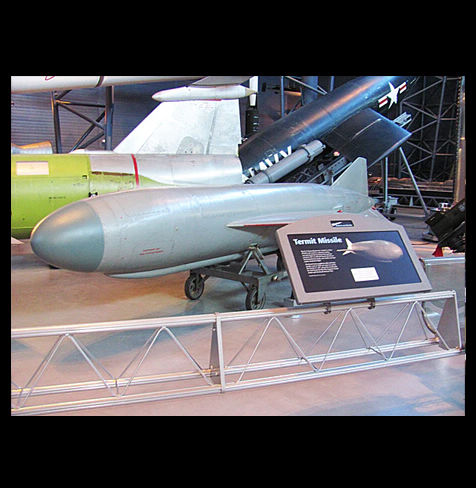

Many space exploration aficionados who are also Styx fans are already aware that a small moon orbiting the (controversial) dwarf planet Pluto was discovered by the Hubble Telescope in 2012 and was named Styx in 2013.
However, another unique item officially bearing the Styx moniker has been around for decades, albeit in a more down-to-earth (and-sometimes-airborne) existence.
The P-15 cruise missile was a mainstay of the Soviet Union’s military for many years. Nicknamed the “Termit” (Russian for “termite”), the missile was developed in the 1950s, during the height of the Cold War.
The North Atlantic Treaty Organization (NATO) allied nations opposed the Soviet Union and its subservient countries, and NATO applied its own code names to Soviet bloc aircraft, missiles, and other weaponry.
And the assigned NATO code name for the P-15 missile was “Styx.”
In its original configuration, the Styx was 20 feet long, and had a range of approximately 25 miles. Over the decades, it would be upgraded and refined. Its range and capabilities noticeably increased, and numerous countries acquired the missile and/or made their own clones of the Styx. Newer, fancier and more-powerful versions of P-15 received code names such as “Silkworm” and “Seersucker.”
Cutting-edge/state-of-the-art examples of the P-15 are still deployed by many nations around the world.
This example of an original-style P-15 “Styx” missile is on display at the Udvar-Hazy Center, located in Chantilly, Virginia near Dulles Airport. The museum also houses historical vehicles such as the “Discovery” space shuttle, the “Enola Gay” B-29 bomber, and the prototype Boeing 707 commercial airliner.
The Udvar-Hazy Center is an ancillary facility of the Smithsonian Institution’s Air & Space Museum.
And many fans of the musical aggregation named Styx would surmise that the P-15 packs quite a wallop, just as the band does in concert.
Photo by Willie G. Moseley